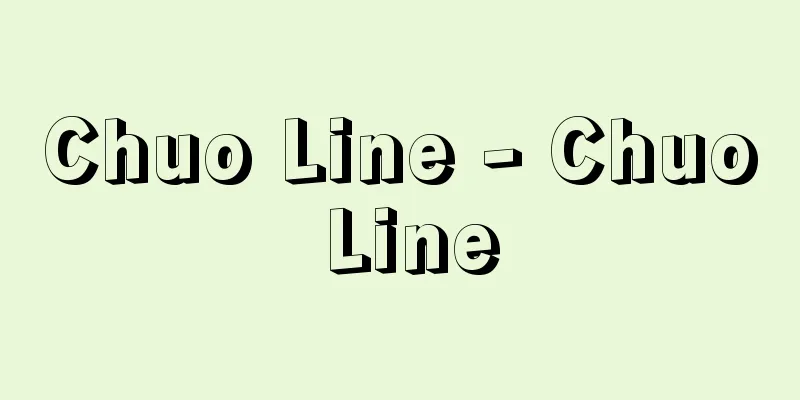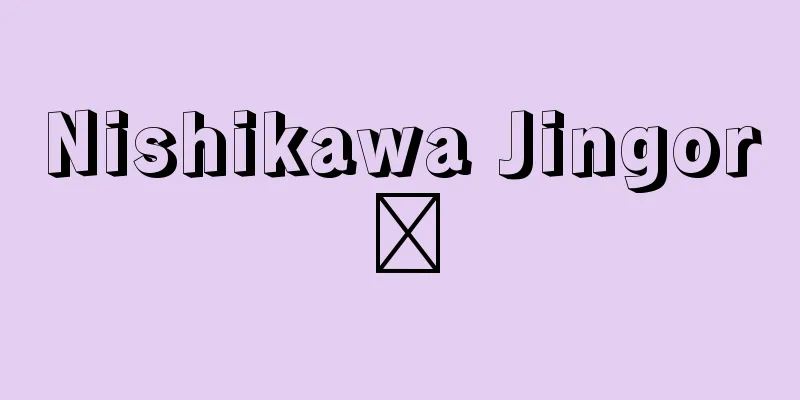Chuo Line - Chuo Line

|
The name of the tracks of East Japan Railway Company and Central Japan Railway Company that run from Tokyo to Aichi Prefecture through Yamanashi, Nagano, and Gifu Prefectures. The 8.3 km section between Kanda and Yoyogi, the 211.8 km section between Shinjuku and Shiojiri, and the 27.7 km section between Okaya, Tatsuno, and Shiojiri are under the jurisdiction of East Japan Railway Company, with a double-tracking rate of 84.2%, while the 174.8 km section between Shiojiri and Nagoya is under the jurisdiction of Central Japan Railway Company, with a double-tracking rate of 85.9% and DC electrification throughout the line. This main railway line runs through the mountainous region of central Honshu, with steep gradients of 25‰ (per mille) continuing throughout. It runs from the western outskirts of Tokyo through the Kofu Basin, Suwa Basin, Matsumoto Basin, Kiso Valley, and Tono region before reaching the Nobi Plain. Starting with the opening of the Iidamachi-Hachioji section by the Kobu Railway between 1889 and 1895 (Meiji 22-28), and the Ochanomizu-Iidamachi section in 1904 (Meiji 37), the Hachioji-Nagoya section was successively opened between 1900 and 1911 as the Chuo East Line and the Chuo West Line by the government railways, and in 1906 the Kobu Railway was nationalized, and in 1911 it became the Chuo Main Line when it was fully operational. Between 1908 and 1919 (Meiji 41-Taisho 8), the Ochanomizu-Tokyo section was opened, and Tokyo became the starting point, but long-distance trains departed and arrived at Iidamachi, the former Kobu Railway's terminal station, until 1933 (Showa 8) when this was moved to Shinjuku and Iidamachi Station became a freight station. The Iidamachi-Nakano section was electrified by the Kobu Railway in 1904 (Meiji 37), which was the first time that electric trains were used on a steam railway line, and when the railway was nationalized, it became the first section operated by the Japanese National Railways electric trains. This was gradually extended, and by 1930 (Showa 5), electric train services had developed into the Tokyo-Asakawa (now Takao) section. Electrification was completed in 1931 for the section east of Kofu, but progress was rapid after World War II, and the entire line was electrified by 1974 (Showa 49). The opening of the Enrei Tunnel (5,994 meters long) in 1983 shortened the Okaya-Shiojiri section, resulting in a reduction in travel time between Shinjuku and Matsumoto. Currently, train operations on the Chuo Main Line are divided into east and west sections at Shiojiri, and most trains enter the Shinonoi Line and run directly to Matsumoto and Nagano, so the names Chuo East Line and Chuo West Line are still used as operational names. [Eiichi Aoki and Ryo Aoki] The photo shows the area between Yotsuya and Ichigaya stations. "Tokyo Landscape" (1911 (Meiji 44)) owned by the National Diet Library . Kobu Railway Source: Shogakukan Encyclopedia Nipponica About Encyclopedia Nipponica Information | Legend |
|
東京都から山梨県、長野県、岐阜県を通って愛知県に至る東日本旅客鉄道と東海旅客鉄道の線路名称。神田―代々木間8.3キロメートル、新宿―塩尻(しおじり)間211.8キロメートル、岡谷(おかや)―辰野(たつの)―塩尻間27.7キロメートルは東日本旅客鉄道の管轄で、複線化率84.2%、塩尻―名古屋間174.8キロメートルは東海旅客鉄道の管轄で、複線化率85.9%、全線直流電化。本州中央部の山岳地帯を縦断する幹線鉄道で25‰(パーミル)の急勾配(こうばい)区間が至る所に連続している。東京西郊から甲府盆地、諏訪(すわ)盆地、松本盆地、木曽谷(きそだに)、東濃地方などを経て濃尾平野に至る。1889~1895年(明治22~28)甲武鉄道により飯田町(いいだまち)―八王子間、1904年(明治37)御茶ノ水―飯田町間が開業したのに始まり、1900~1911年に八王子―名古屋間が中央東線、中央西線として官設鉄道により逐次開業し、1906年甲武鉄道を国有化、1911年全通とともに中央本線となった。1908~1919年(明治41~大正8)御茶ノ水―東京間を開業して、東京を起点とするようになったが、長距離列車は旧甲武鉄道のターミナル駅飯田町に発着し、1933年(昭和8)これを新宿に移して、飯田町駅は貨物駅となった。飯田町―中野間は1904年(明治37)、甲武鉄道によって電化されたが、これは蒸気鉄道の路線に電車を併用運転した最初であり、同鉄道の国有化によって最初の国鉄電車運転区間となった。これが逐次延長されて、1930年(昭和5)までに東京―浅川(現、高尾)間の電車運転に発達した。電化は1931年、甲府以東の区間が完成したが、第二次世界大戦後急速に進んで、1974年(昭和49)までに全線の電化を完成した。1983年塩嶺(えんれい)トンネル(長さ5994メートル)の開通によって岡谷―塩尻間が短絡され、新宿―松本間の所要時間の短縮が実現している。現在の中央本線の列車運転は塩尻を境として東西に二分され、大部分の列車が篠ノ井(しののい)線に乗り入れて松本、長野方面に直通するので、中央東線、中央西線の名称は現在も運転上の通称として用いられている。 [青木栄一・青木 亮] 写真は四ツ谷~市ヶ谷駅間。『東京風景』(1911年〈明治44〉)国立国会図書館所蔵"> 甲武鉄道 出典 小学館 日本大百科全書(ニッポニカ)日本大百科全書(ニッポニカ)について 情報 | 凡例 |
<<: Central Pharmaceutical Affairs Council
>>: Central Standard Time - Chuo Hyojunji
Recommend
Kawachi no Ayauji
...they claimed to be descendants of Emperor Ling...
movie musical
...A major Hollywood genre along with westerns an...
Darlington, CD (English) DarlingtonCD
… There are various theories about the origin of ...
Alexander the Great
… 【history】 Geographically, Macedonia is consider...
IRCAM (France)
Its official name is the "Institut de recherc...
Hebrew myths
Mythology that is believed to have been passed dow...
Yomei Bunko - Yomei Bunko
This is a special library that preserves and mana...
Scientism - kagakushugi (English spelling) scientism
A term given to a part of the philosophy of empiri...
Slavic Greek Latin Academy - Slavic Greek Latin Academy (English spelling) Slavyano‐Greko‐Latinskaya Akademiya
The first general institution of higher education ...
rook
…A small number of ravens (C. corax) migrate to H...
Hojo Tokiyuki
Year of death: Bunwa 2/Shohei 8.5.20 (1353.6.21) Y...
Pozsony
…Population: 452,000 (1996). German: Pressburg, H...
Thick plank roofing - Atsuita Danbuki
...Kozokubuki is a type of roofing that uses boar...
Mikawa Plateau
A plateau in northeastern Aichi Prefecture. It is ...
Pioneering spirit
...This is closely related to the formation of po...









